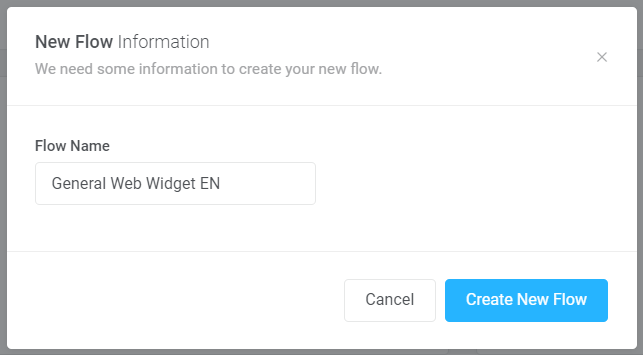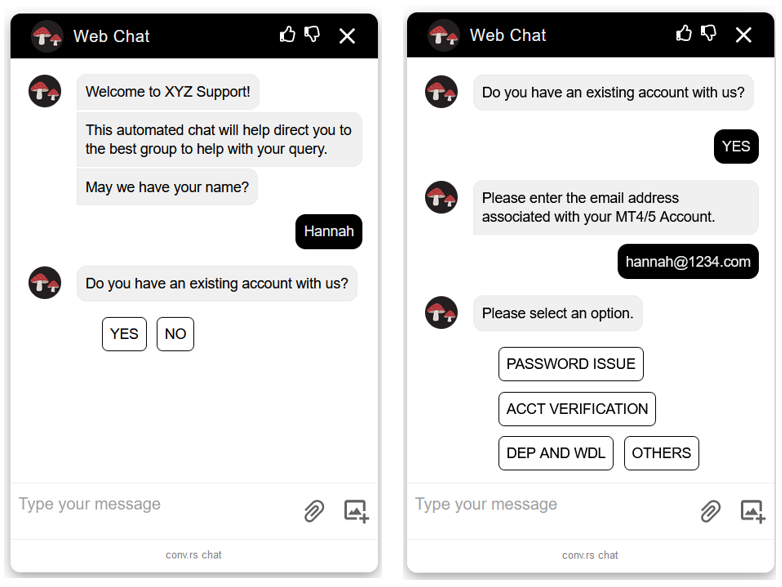Create a New Chatbot Flow
Messaging intent is necessary in designing a flow. Each channel and its associated flow has a purpose in your engagement process. A message intent represents the behavior, action, or goal that you aim to have the message drive. Understanding the message intent and how this plays with the specific messaging channel helps you design a better user experience for your customers.
Add a new flow
Click on the 'Create New' button if you wish to create a new flow.

Then input your desired flow name then click the 'Create New Flow' button.

Once created you may go to either the Show All Flows or the Edit Flow pages and search for the newly created flow to open it. You now have a blank canvas to work with and add the details for your flow to run.
Import a flow
Click on the 'Import' button if you wish to import a new flow.

Drag and drop a JSON file you want to import on the field provided. Rename or retain the name of the imported flow. Once done, press the 'Import New Flow' button.

Go to the Show All Flows or the Edit Flow pages and search for the newly created flow to open it. You now have a blank canvas to work with and add the details for your flow to run.
Limitations in designing flows for messaging channels
Yes, there are certain limitations in designing flows for specific messaging channels.
Some factors to consider include how messaging channels enable or trigger flows, what type of data can be automatically pulled, and how users interact with the channel and its intent.
Channel Triggers
With LINE, and if enabled, WhatsApp Outbound, one would typically need to have a user initiate a message before the bot is triggered to send its first message. On the other hand, Viber would send a welcome message but would need a user to reply so that the bot will be triggered. Knowing these affects how you design your flow and how to word your copy ensuring that the user experience is seamless and easy to follow.
Data Capture
Most channels have data that are automatically captured by the dashboard. For example, names via the user’s profile can be pulled from WhatsApp, Telegram, Messenger, LINE, and Viber. On the other hand, mobile numbers can also be automatically pulled from WhatsApp conversations.
However, web chat would need a user’s input throughout their engagement journey to capture their email address, phone number, and possibly their name.
User Interaction and Message Intent
Generally, WhatsApp users want to be able to talk to a real human versus a bot, especially for customer service queries. With this in mind, WhatsApp Outbound has the flow usually turned off and messages are being routed directly to an agent. On the other hand, customers are used to either Telegram or Messenger having a bot in the frontlines before being able to reach an agent.
Create flows with options/buttons
We generally recommend using Telegram, Messenger, WhatsApp API, and Web Chat in enabling flows with multiple options and/or buttons. However, there is a maximum in the number of buttons or options you can add to a message.
Keep in mind your engagement journey, and how it should be user-friendly. We want to empower our customers with choices, and not inundate them so that they would eventually drop out.
Learn how to add the options and buttons in the next section.

Contact your Convrs representative if you have any further questions, and we are more than happy to help.
[RO181122V1]